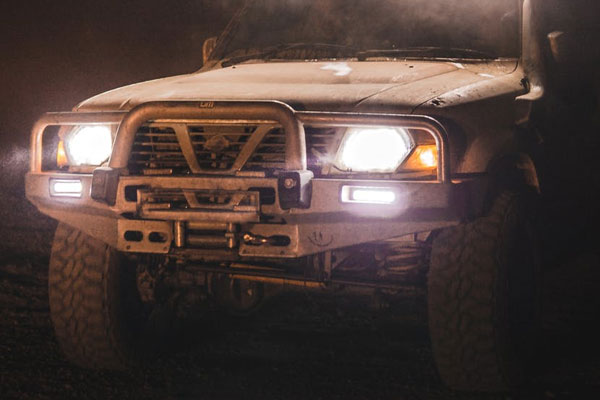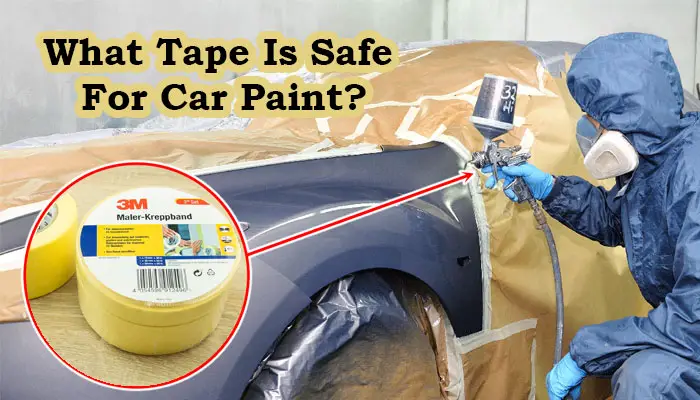Do Smoked Headlights Affect Visibility
- By Infoik
- 21 Oct, 2021

Do Smoked Headlights Affect Visibility?
Headlight armor films are a great way to dull the glare of oncoming cars, but they can also reduce your visibility at night.
There is some controversy about how much tinting will affect headlight performance with smoked lenses – it depends! However, if you live in an area where traffic enforcement often occurs, then this might not be enough protection for yourself or your loved ones when driving late-night hours near major roads and intersections.
Smoked Headlights, Tinted Headlights and its Visibility
Smoked headlights, tinted light, tinted headlights law, visibility and other related topics are covered here in this article. Along with this discussion many FAQs are answered so that visitors can be benefited. We can assure you that everyone will finds his/her queries here and they don’t have to go anywhere else.
Smoked headlight films reduce night visibility. How much of a reduction depends on the level and type of tint applied, as well as other factors such as weather conditions like sky clarity (weakly reflective) versus heavy rainfall with droplets that become larger than ordinary raindrops due to their size hitting your windshield at high speeds causing them to bounce back up again towards you creating dazzle; light interference from passing traffic also known colloquially around these parts areas dark glasses may be needed during certain times so keep those shades handy!

For those of you who can’t live without your bright chrome accents, we recommend the Light Smoke. This film will make it look like a headlight and not blacked-out (though some might say they prefer that) but with plenty more output than our darkest options!
We put together a photo series to show you what the night looks like from every angle. We included head-on photos, as well as views of how light reflects off. Then, of course, ‘s car when it’s parked in spots near bright street lights or under overpasses with high angles that let harsh shadows creep across its surface (we call these “beams”). There are also closeups where you can see details, for example, which bulb casts blue tones versus yellow ones on our test vehicle!

One of the significant differences between a car with dark tint and clear is that it reduces their output by 30%.
Tinting can come in many different colors, but there’s no way around this truth: any time you see something advertised online or on TV claiming to reduce your gas use by 15% when installing some other type – even if its claimed transparency helps block UV rays from heating interior surfaces- know those numbers will be significantly lower because all light has been absorbed into whatever color film was used instead.
Frequently Asked Questions (FAQ)
Can you have black headlights?
One of the most popular questions we get is whether blacked-out headlights are illegal. The answer to this question depends on your local laws, but there’s no law against having lights that don’t work correctly!
Does headlight tint affect visibility?
Tinting headlights will reduce visibility, but with different levels of lightness, it’s hard to tell whether or not that decrease in headlight strength is noticeable. Lighter films might have minimal impact, while darker ones may affect more than just how much you can see out from your vehicle before turning onto an intersection- they also change its appearance drastically enough. Hence, passersby know exactly what type of car is nearby without having any other clue!
Is headlight tint bad?
Tinting your car’s lights can be a great way to protect them from damages, scratches, and chips. It will also reduce the risk of yellow headlights becoming dirty or tone-less because it blocks out UV rays which are known causes for fading in high-intensity light sources such as headlight lenses!
Can you smoke your headlights?
For those who love to keep their cars looking nice and new, precut headlight tint is a great choice. Unfortunately, this latter method of painting one’s headlights also became known as “smoking” due to its gray or charcoal appearance after being finished with paint sprayers in many cases. You must have all the right tools for this job, though – otherwise, it can turn out unevenly if not done correctly!
Are headlight wraps legal?
There are many restrictions when it comes to your car’s lights. For example, you can’t put any spray or film over them because other states will make you change the color of all bulbs on-site, which could be expensive! But some have more lenient rules about what kind of headlight is allowed in their state – for instance, California requires white ones while Texas does not care at all as long, they’re available light sources (their rear lamps must still work).
How much does it cost to get your headlights smoked?

Most drivers find that they are comfortable with the price range of $65-150 for any job. But, of course, we charge more if your car requires customized lenses or there’s an extensive amount to cover, so call us before ordering!
The average person should expect to pay between 65 cents and 150 dollars per lens depending on what kind of vehicle you’re looking into getting work done on at our shop; however, this can vary significantly based on certain circumstances like how many sets will need to be replaced in order get finished within budget requirements – which is rare since most people don’t want their cars waiting around forever while we do all sorts stuff under them (yikes).
Are black smoke headlights illegal?
Smoked lenses are a thing of the past in California, as they have since outlawed it! If your headlights, fogs, and brake lights on your vehicle Code say: “Unless….” It’s stylish, but most times, these mods may look good from 1000 feet away – ask any raccoon with their eyes burnt out by one of those pesky little smokies.
Are blackout tail lights legal?

Blacked-out tail lights are illegal in all 50 states. If you can’t see anything through your taillights, and it’s difficult or impossible to know when that signal has been turned on due to opaque lenses covering them up – then beware! This might be a sign of an issue with tinting, which may jeopardize both personal safety and other drivers’ visibility while driving down the road together side by side.
How illegal are smoked headlights?
Tinting your car’s headlights may seem like an innocent act to some, but you should know that it is actually against the law. For example, if tinted films cover 70% or more plastic coverings, authorities will ticket drivers who do not voluntarily remove this excess before getting pulled over!
How dark can I tint my headlights?
The general rules for taillights and headlights are to keep the original color, meaning white/yellow lights, on your license plate. In addition, a tinted light cannot dim more than 50% of its brightness; otherwise, it would be too difficult to see through them correctly.
Can you put a tint on headlights?
Tinting your headlights, the easy way with precut headlight tints is an excellent idea for anyone looking to upgrade, protect and restyle their car’s exterior. First, apply Alight’s stain by spraying or squirting on its durable finish, then wiping away excess residue!
Will tiny bubbles in tint go away?
One of the most common problems that can occur with window tinting is bubbles. If you have any air pockets under your film, they will not go away even after 24 hours and are best fixed by having them re-applied for a seamless appearance on all four sides!
Is Spray Tint permanent?
Window tints are an easy way to give your car that cool, sleek look. But if you want the job done quickly and without any mess, then spray-on window tint may be right for you! You only need one thing: an aerosol can fill with clear gunk that will turn out any color of glass desired – all it takes is some spraying away from wherever there should now regular old windows on these coming cars etc., let alone back here at home too!).
Does tinting headlights reduce visibility?
Tinting your car’s headlights may reduce its visual quality, but the amount of tint will determine how much. Lighter films are unlikely to produce any noticeable deterioration in headlight strength. At the same time, more intense shades like black might decrease visibility significantly enough that you’ll want new ones installed as soon as possible after buying!
Are smoked headlights legal?
How dark are your smoked headlights? Then, it’s time to shine the light. Headlights are a significant safety hazard because they block out all of our lights. If you crash with them on, it will be nearly impossible for anyone else in an intersection or nearby area to see what is happening around that corner. So, I would say just essential Grey tinting may work well enough as long as there isn’t too much contrast between objects once again, which could cause problems when driving at night due especially since most people don’t realize how broad directional lighting has been made so now even within three feet everything looks evenly lit up!
Is it reasonable to tint your headlights?
Tinting your car lights can protect them from being damaged, scratched, or chipped. In addition, it reduces the risk of yellowed headlights because dirt and UV rays don’t have as much access to tinted surfaces, which leads to cleaner lenses that are less likely to dirty up with age due in part to having a layer between you and all those harmful elements outside.
Is blacking out your headlights illegal?
Headlights are the eyes of your car; they should be bright enough to give you all the information needed to navigate through traffic safely. If anything is blocking them, like smoked headlight covers or dark glass, it will make driving much more complex and could even cause accidents with other drivers not seeing what’s coming towards them!
Why is tinting illegal?
Tinting your car windows can be a great way to increase visibility for you and other drivers on the road. However, because it blocks some of what’s happening outside your vehicle – like light reflecting off objects behind glass or at night–tint may not work out so well in most states where these laws have been passed against it.












